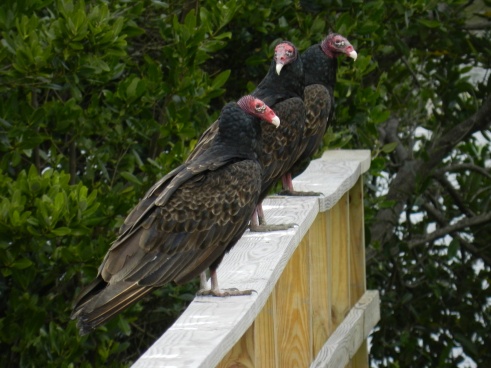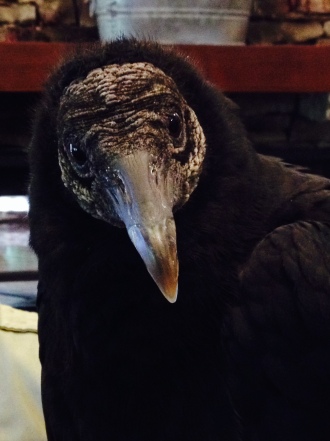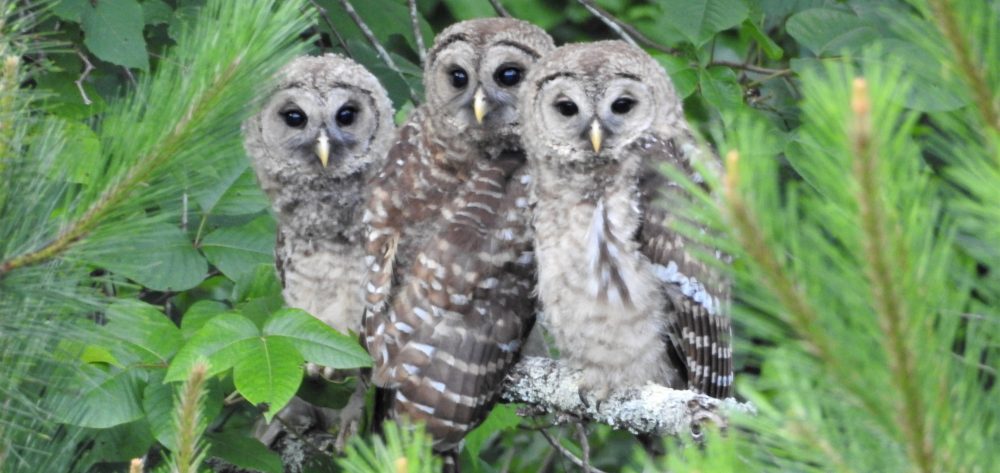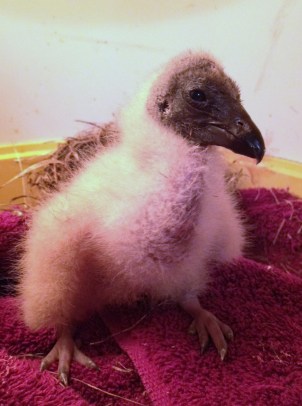Happy International Vulture Awareness Day! Today marked the 6th annual observance of this day that celebrates these vital and fascinating birds and brings attention to the serious threats they face worldwide. I guess there really is a holiday for everything, haha! Seriously, though, as one of nature’s most successful scavengers, vultures provide an array of ecological, economic, and cultural services that are immeasurably valuable to humans and our environment. They deserve this celebration, along with our gratitude and respect.

These Turkey Vultures, like other members of the vulture family, provide essential environmental sanitation services. And, believe it or not, I think they are also beautiful.
North America is home to three species in the vulture family—Turkey Vultures, Black Vultures, and California Condors. The only known obligate scavengers among vertebrates, they play a vital role in sanitizing the environment. The word vulture likely comes from the Latin vellere, which means to pluck or tear, a reference to the way it feeds on carcasses; however, I prefer the scientific name, Cathartes aura, which originates from the Greek words for “purifying breeze” and alludes to the tremendous ecological service that vultures provide. They patrol the air, finding and ridding the land of carrion, which would otherwise be a breeding ground for disease. These birds are uniquely adapted to their scavenger lifestyle, having keen eyesight and wings built for soaring flight. With a wingspan as large as an eagle’s, they can soar for hours and rise to heights of 5,000 feet in search of food. Their featherless heads (easier to keep clean) and highly acidic digestive system also equip them for their dining preferences. Studies have shown that diseases as potent as anthrax, botulism, and rabies do not survive passage through a vulture’s digestive system. These free sanitation services benefit humans ecologically and economically.
Turkey Vultures, one of the few birds to have an excellent sense of smell, provide another invaluable service to humans by helping identify natural gas leaks. Natural gas is by itself odorless, so gas companies add the unpleasant smelling chemical ethyl mercaptan to it so that people can smell gas leaks. As it happens, ethyl mercaptan is also one of the chemicals emitted by putrefying animal carcasses, so leaks in natural gas pipelines often attract great numbers of Turkey Vultures. Because natural gas pipelines often cross out-of-the-way places, a congregation of Turkey Vultures circling overhead is often the first to sound the alarm, alerting humans of the problem.
Fortunately, both the Turkey Vulture and the Black Vulture have healthy populations, and the California Condor, once driven to brink of extinction, is making a slow, but hopeful comeback, though it is still a critically endangered species. The greatest threats to these birds arise from the consumption of carcasses that have been poisoned or killed with lead shot. In other parts of the world, however, many species of vultures are critically endangered with disastrous effects for humans. In India, for example, vulture population declines of more than 95% have occurred in the last decade, largely as a result of the use of anti-inflammatory drugs in cattle, on whose contaminated carcasses the vultures feed. This decline, which has caused an increase in other scavenger species such as rats and feral dogs, has been linked to an increase in the transmission of deadly diseases such as rabies and bubonic plague. Clearly, human and environmental health is intimately connected to these unique birds, making their conservation critically important.
Personally, I find vultures beautiful and fascinating. They are spectacular in flight, and up close, their silly, bald heads are endearing. Having worked with them in rehabilitation and education programs, I can attest that they are smart birds and can be quite charming. A non-releasable black vulture at the wildlife rehabilitation center where I volunteer (AWARE) quickly learned the routine at the center when it was time for his cage cleaning and physical therapy. He figured out our hand signals indicating where he was to perch and also how to sneak dead prey items intended for other birds when his caregivers’ backs were turned. He became rather cantankerous when someone would try to make him move or retrieve stolen food, but his grunting was rather comical. So far, I’ve never met a vulture I didn’t like.

Fabio, a Black Vulture at Amicalola State Park, teaches the public about the important benefits of vultures. Isn’t he adorable?!
In some parts of the world, vultures are sacred for their cleanup role. Tibetan Buddhists practice “sky burials,” where animals, usually vultures, consume their dead. Similarly, Zoroastrians offer their dead to be consumed by vultures on a raised platform. They regard vultures as precious animals that release the soul from the body. (To me, this sounds more appealing than being preserved and buried in a fancy, oversized coffin in the ground.) Hopefully, the celebration of these birds on this unique holiday will help more people to appreciate the vital services they provide. Happy International Vulture Appreciation Day!
Other interesting facts about vultures:
Unlike true birds of prey, their feet are flat and poorly adapted for grasping, and their beak is less hooked and relatively weak, being designed for tearing partially rotting flesh rather than fresh meat. Because the talons are almost useless for defense, vultures will either play dead or projectile vomit on their attacker if threatened while nesting or roosting.
Vultures lack a syrinx (vocal organ) and can only communicate with hisses and grunts.
Vultures cool off by defecating on their own legs. The water evaporates to provide a cooling effect, similar to sweating. This habit is the reason their legs often appear white.
Although the Black Vulture and California Condor are non-migratory, some populations of Turkey Vultures annually migrate in huge flocks to Central and South America.
A group of vultures has many collective nouns, including a committee, a vortex, and a wake of vultures.
Here’s another great post about vultures from an author and blogger I admire: Why So Many Vultures?
A great source of information about vultures and other North American birds is the Cornell Lab of Ornithology: http://www.allaboutbirds.org/

